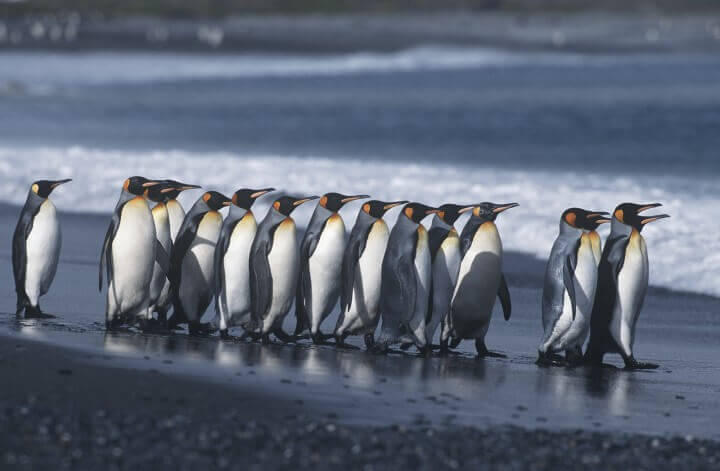Whether you see them at the zoo or as one of those cute characters in several movies out today it may be surprising to learn that penguins have a long history. Scientists have theorized that penguins probably evolved from flying birds more than forty million years ago as the early ancestors of penguins became adapted to an oceanic environment, structural changes for diving and swimming required the loss of flying adaptations.
As of today the discovery of all penguin fossil fragments and existing species of penguins has been limited to the Southern Hemisphere. Penguins have not traveled far as records show that prehistoric penguins were found within the range of present-day penguins.
The first European explorers who probably saw penguins were part of the Portuguese expedition of Bartholomeu Dias de Novaes in 1487-88. This expedition was the first to travel around what is now known as the Cape of Good Hope in southern Africa.
Penguins come in a range of sizes. The emperor penguin is the largest of all living penguins, at about three and a half feet tall and weighing between sixty and ninety pounds. The smallest of the penguins is the fairy penguin, standing just sixteen inches and weighing about two pounds. The penguin body is known as a fusiform and is streamlined and adapted for swimming. A penguin has a large head, short neck, and elongated body with the tail being short and wedge-shaped. The webbed feet and position of the legs on the penguin cause it to stand upright when on land. All adult penguins are counter shaded; which means that they are dark on their dorsal (back) surfaces and white on their ventral (underside) surfaces. This is a matter of survival since the coloring acts as camouflage. The dark dorsal side blends in with the dark ocean depths when the penguin is viewed from above. The light ventral side blends in with the lighter surface of the sea when it is viewed from below. Different species have distinct markings and coloration. The penguins’ wings are modified into paddle like flippers. The different species of penguins can be identified by their head and facial markings.
Penguins have a variety of different bill shapes which are used to capture fish, squid, and crustaceans. One of the most interesting facts about penguins is that they have a variety of eye colors amongst the different species. The color of the eyes in penguins can range from brown, red and even bluish-gray or yellow. While most penguins are content to walk wherever they want to go, Antarctic species can move much faster over ice by “tobogganing” on their bellies, using their flippers and feet to help them move along. The penguin is covered in feathers that uniformly overlap to cover a penguin’s skin. Penguins actually have more feathers than most other birds, with about seventy feathers per square inch. Most penguins molt their feathers once a year and since penguins don’t enter the water to feed during a molt, they fast. Before their molt, they work on building a fat layer, which provides energy until the molt is over.
Generally, penguins are not sexually dimorphic; meaning that males and females look alike. Only the Crested penguins are the exceptions: the males are more robust and have larger bills. During the breeding season, female penguins are sometimes identifiable by the muddy footprints on their backs, left by males during mating activity.
Penguins tend to be long-lived and therefore may take three to eight years to reach sexual maturity. The breeding seasons and courtship rituals tend to vary widely from species to species. Generally though, mate selection is up to the female, and it is the females that compete for the males. Penguins also tend to be monogamous to the same partner and nesting area.
Despite facing a harsh environment and predators on both land and sea, penguins on average live between fifteen and twenty years and some species even much longer. Conservation efforts have helped most penguin populations and protection of their potential offspring (usually only one-two eggs per nest) has become of paramount importance.


Leave a Reply